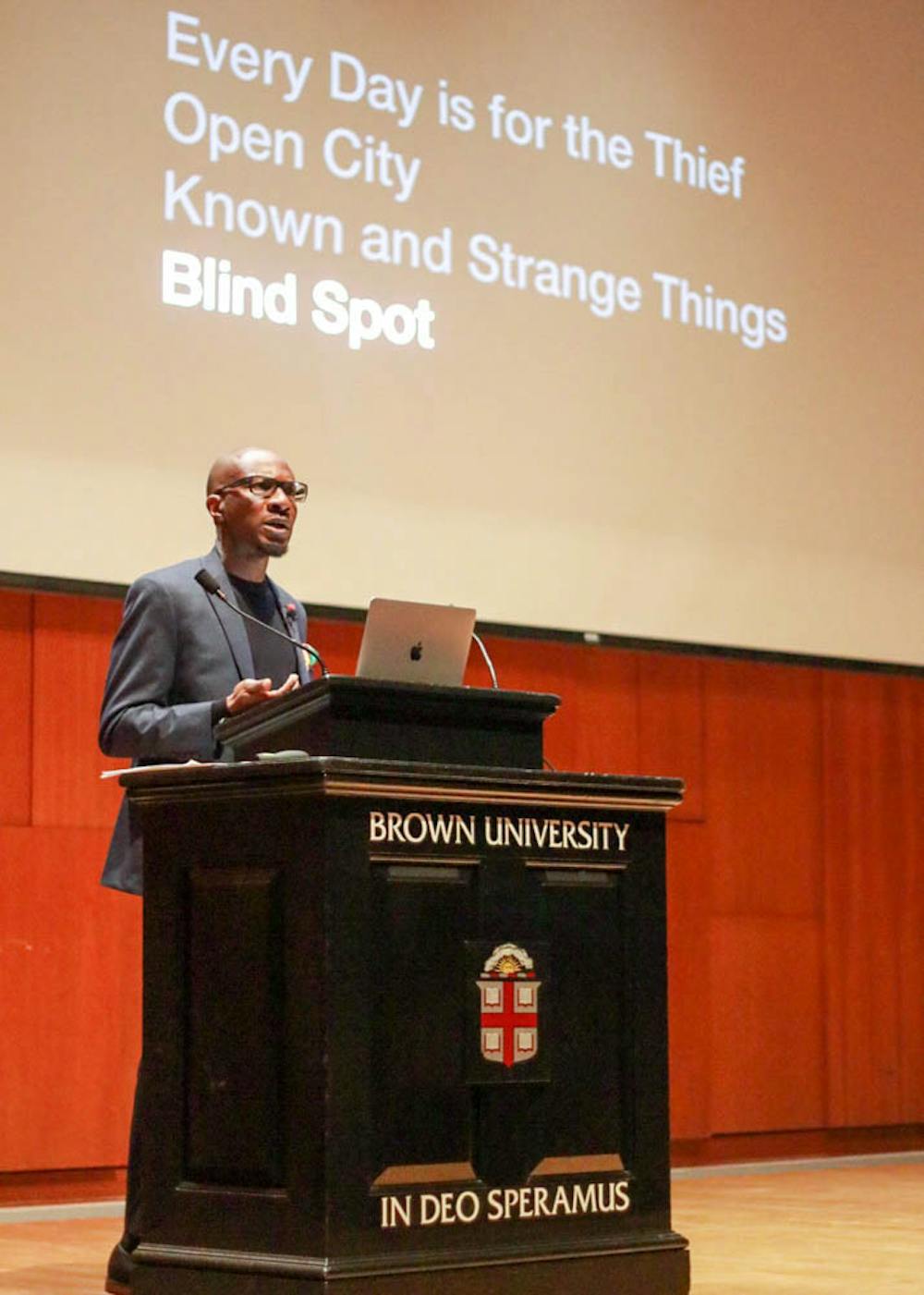Teju Cole, New York Times Magazine photography columnist and professor of the practice of creative writing at Harvard, spoke to an almost fully packed Salomon 101 Monday night. In the one-hour lecture, titled “Breaking Form,” Cole read excerpts and showed photographs from his book, “Blind Spot.” He also talked through some of his critiques from “On Photography,” his column at the New York Times Magazine.
Cole acknowledged that his work crosses a variety of subjects, from art and photography to politics and writing. He first displayed “Blind Spot,” a photobook that shows “what words might have to say to pictures.” The book contains 150 photographs with texts that represent “voice overs” adjacent to the visual work, Cole said.
Students and other members of the Providence community experienced the book visually and auditorily as he literally “voiced over” his photographs that were displayed in a slideshow. The texts varied in length, cadance and origin. For one photo, Cole hummed a song on stage and for another, he even inserted a line from poet Gerard Manley Hopkins.
He noted that in his writing process, he tries to find “three or four far-fetched things that have relationships with each other.”
The title “Blind Spot” refers to when Cole had papillophlebitis — otherwise known as big blind spot syndrome—which obstructed his vision. The problem was fixed, but ever since, he said his photography has become calmer.
After presenting on the book, Cole described his work as a photography critic. It takes Cole two weeks to write a critique, a process he labels as “exhausting.” He showed the audience various photographs he has reviewed, including one of a West African woman with a caption of “‘Je veux être seule,’’ meaning “I want to be alone” in English. In his review for the Times, he wrote that the caption suggests the woman “has decided her own image.”
Santiago Wilson Heredia ’22 came to the talk because “as an aspiring writer, I was curious to see if I could learn something to help improve my own writing,” he said.
The talk was presented by The Department of Visual Art and supported by the Department of Africana Studies, Brown Arts Initiative, Cogut Institute for the Humanities, Department of History of Art and Architecture, Program in Literary Arts, Department of Modern Culture and Media and the Mollie D. Manneville Lectureship Fund, according to its Facebook page.





